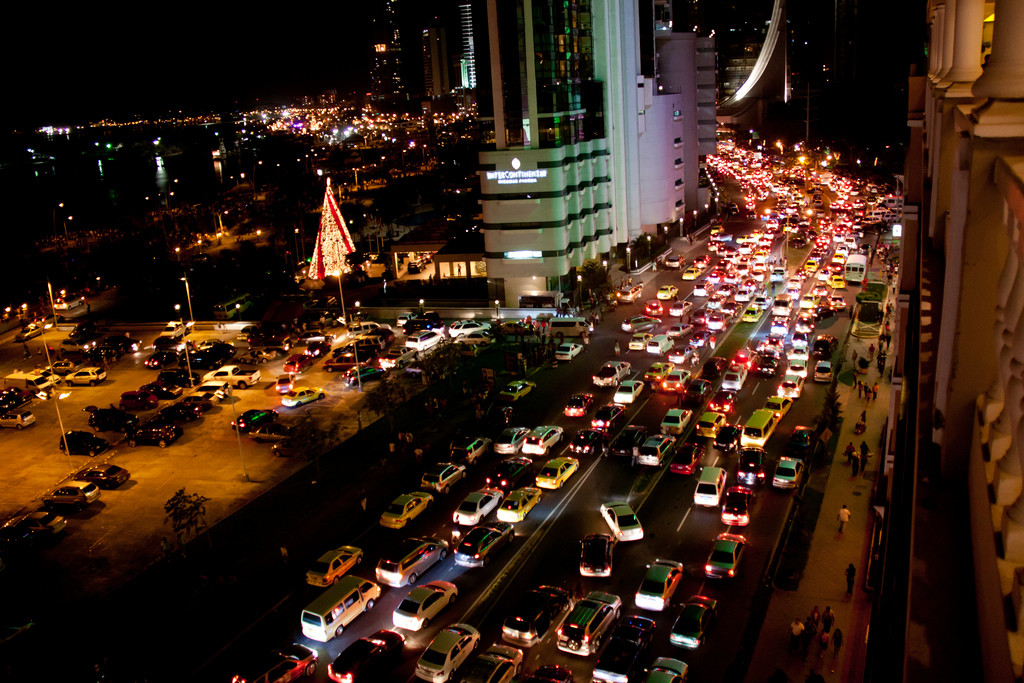While Baton Rouge is notorious for its traffic congestion, business and civic leaders from the south Louisiana Super Region on a canvas trip to Panama this week are realizing it’s all relative.
Rush hour gridlock in Panama City, the nation-state’s capital, is so intense at times that a less than 6-mile trip from downtown to a popular waterfront museum—the equivalent distance between the Louisiana State Capitol to the Baton Rouge Marriott near College Drive—can take well over an hour. Vehicles sit nearly stalled for minutes on end, so much so that vendors in push carts venture out onto the highway and stand between the lanes selling snacks to hungry motorists.
As is the case in many rapidly growing developing nations, the infrastructure is insufficient to handle the number of vehicles on the road. It doesn’t help matters here that traffic rules are seemingly nonexistent.
One way Panama is trying to address the problem is with the development of a monorail, the first ever in Central America. The $15 billion project began several years ago and the first line was completed in five years. Construction on a second line is underway, with a third line in the planning stages.
Response to the project has been overwhelming, and demand is nearly twice what had been projected, engineer Augustin Arias with Metro Panama told the local canvas group. Still, it hasn’t done much to improve congestion, at least not yet, he said.
The infrastructure challenges in Panama is one of several issues the local canvas group has been learning about on its four-day visit, which wraps up today. Urban planning is another. Thursday, the group visited the site of the largest mixed-use development in in the world. Under development since 2008, it sits on the 5,700-acre site of the former Howard Air Force base outside of Panama City.
Called Panama Pacifico, the development offers warehouse and manufacturing space, and an airport, and will eventually provide schools and some 27,000 single-family and multi-family housing units.
Business Report – Baton Rouge – —Stephanie Riegel
